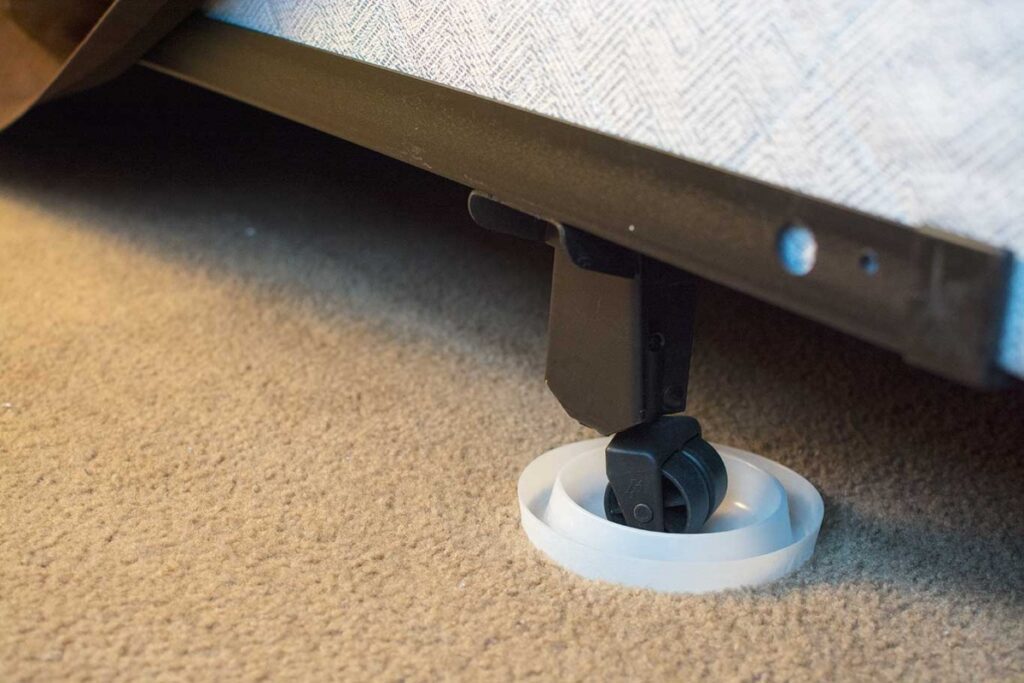Bed bugs are known to be pests that can cause a lot of chaos in a home. You typically know you have them when you either see bites, or signs of activity such as shell casings. However, one does not give much thought to what bed bugs do when they aren’t biting. Where do they hide when they aren’t using you as a meal? We will look at one such hiding spot and answer the question can bed bugs live in wood?
Bed Bugs in the Floor
Absolutely! Bed bugs will hide anywhere they can, and wood is an excellent choice! One such wood would be hardwood and the place bed bugs will hide is one most people don’t think about, the floor! That’s right, a hardwood floor is the perfect spot for bed bugs to hide out in because it has many cracks and crevices.
Many people think of paneling or wooden furniture when they think about potential hiding spots, but the floor should also be taken into consideration. Remember it is these pests’ job to hide well to avoid detection, so you sometimes need to think outside of the box!
Wooden Furniture

As mentioned above wooden furniture is also a potential hiding spot for bed bugs. The reason for this is often wooden posts or bed legs are hollow. This allows bed bugs to sneak in the cracks and crevices and hide! Whenever you suspect or find a bed bug infestation you would want to check your wooden furniture for any signs of bed bugs. Remember any small space they can find they will absolutely reside in.
Their flattened bodies make it easy for them to squeeze into tiny spaces, making them quite the challenge to locate. Wooden bed frames, headboards, nightstands, and even baseboards are among their favorite hiding spots. The appeal of wood, particularly the rougher, untreated varieties, lies in the many grooves and imperfections that offer shelter to these pests.
A study from the University of Kentucky’s College of Agriculture, Food and Environment reveals that bed bugs are not strictly bound to fabrics and can indeed thrive in wooden environments (source). While not every wooden object will harbor these pests, it’s essential to inspect any piece that’s in close proximity to sleeping areas or has had previous bed bug sightings.
Specifically, wooden bed frames are prime targets. The gaps, seams, and cracks typically found in such structures offer excellent hiding spots. Headboards, especially those made of solid wood with ornate carvings or design elements, can also become hotspots for bed bug activity.However, bed frames and headboards aren’t the only wooden objects at risk. The rear of wooden drawer units, where the backing meets the frame, is another area where bed bugs may congregate.
Repelling Bed Bugs
If you are looking for natural ways to repel bed bugs from your furniture you can go with natural remedies such as baking soda, ginger, or cayenne pepper! If natural remedies are not working as expected, you can use insecticides but be aware that while these are effective, they may not be enough to get into tiny crevices and you may need to use a large amount to try and reach them.
One thing to keep in mind in using these is they are often not safe for use by children or pets. You would want to read label instructions carefully and ensure you follow their directions.
More Methods to Repel
If using the more natural methods or insecticides does not work, you can try steaming your furniture. The reason that steaming is preferred to carpet cleaning is due to the temperatures that steaming can rise to. While steaming is more effective than carpet cleaning you would also want to use caution with using steam on wood.
The reason for this is that with high heat and the moisture you are exposing the furniture to it may cause the wood to become warped or to bend unexpectedly.
If the steam method is not for you then the next best method would be a pest professional. Pest professionals are trained in how to spot bed bugs, treat them, and ensure they don’t become repeat offenders! While bed bugs cannot eat wood to survive, they can live in it and cause more headaches!



